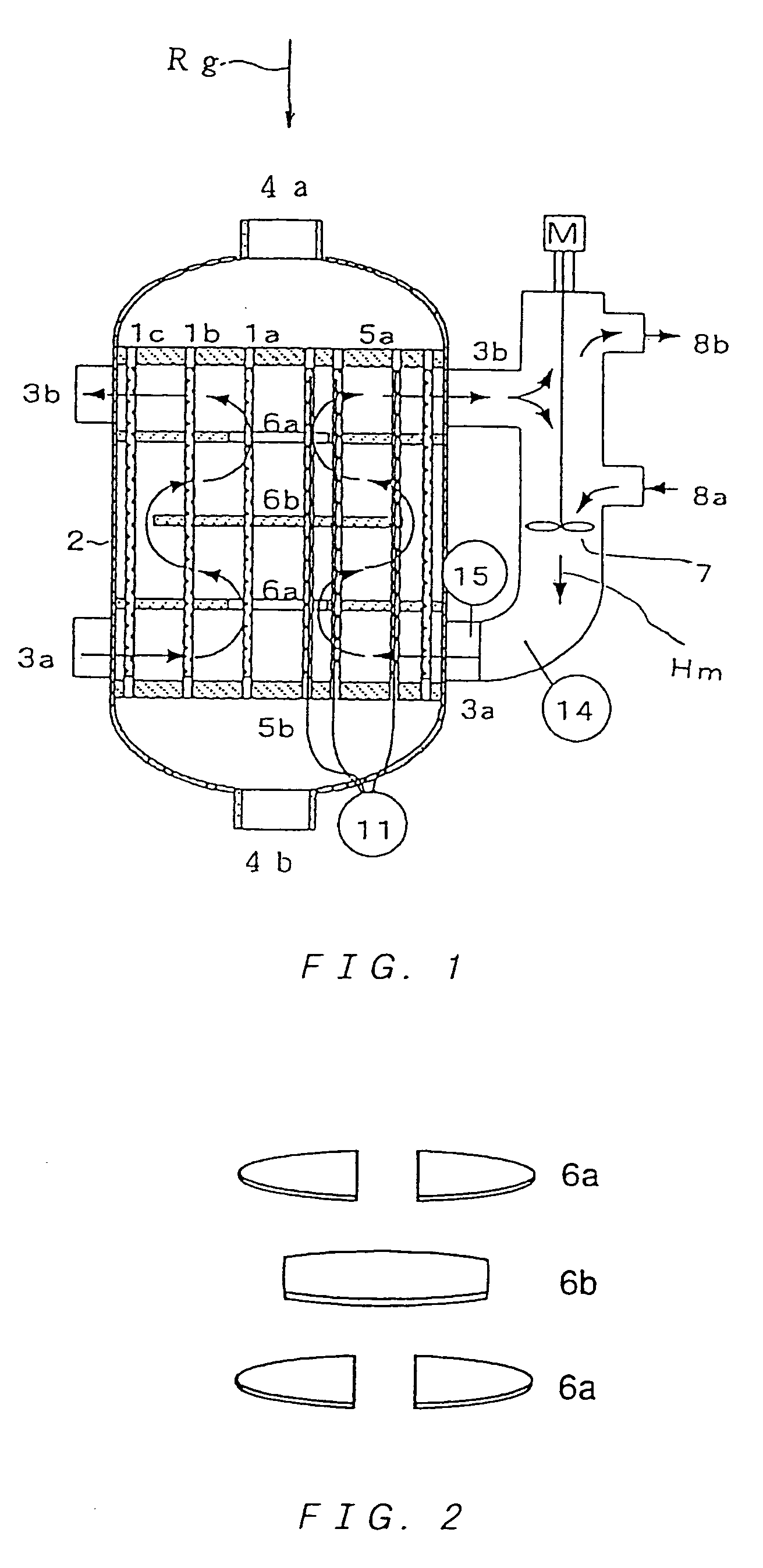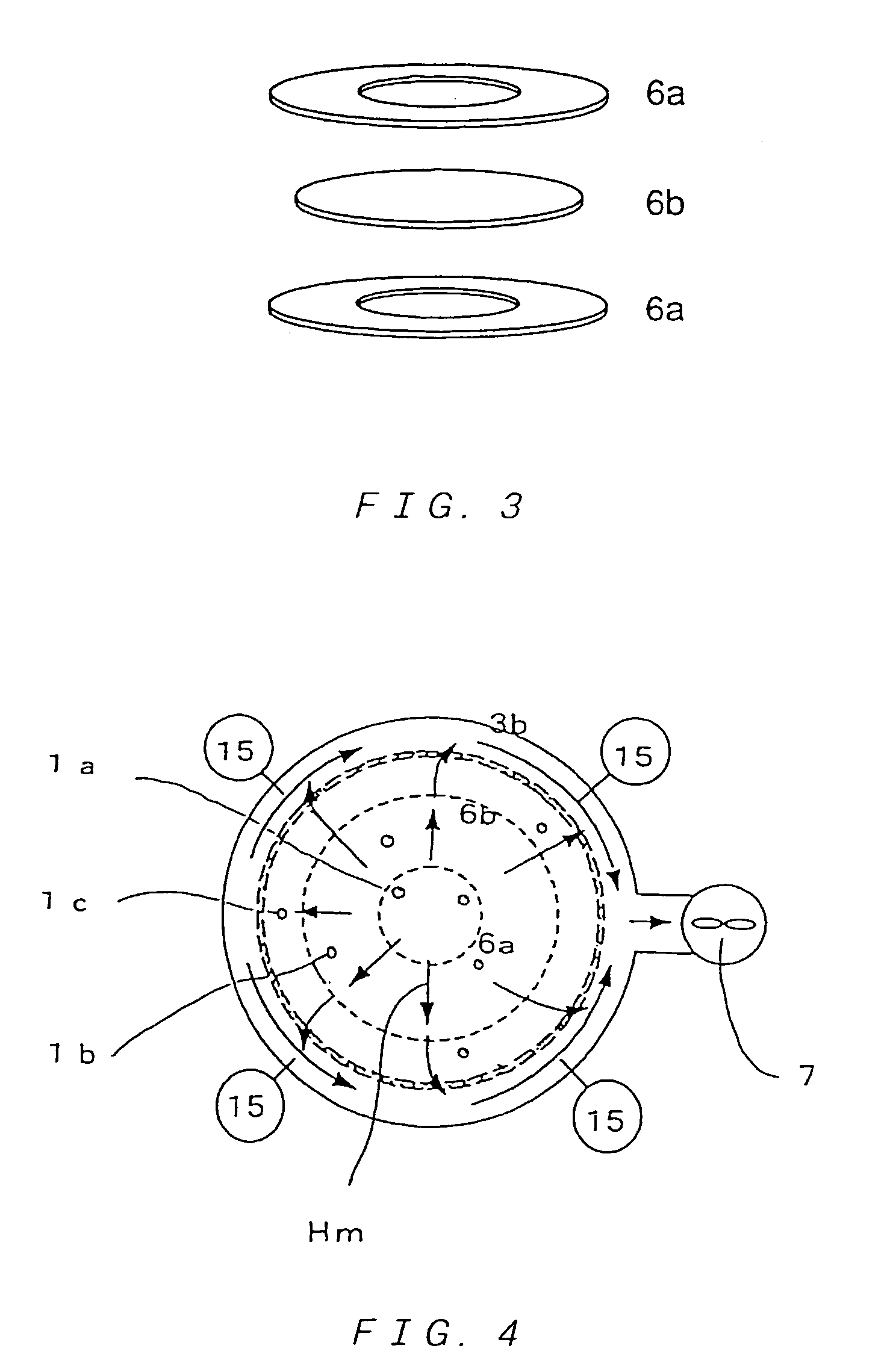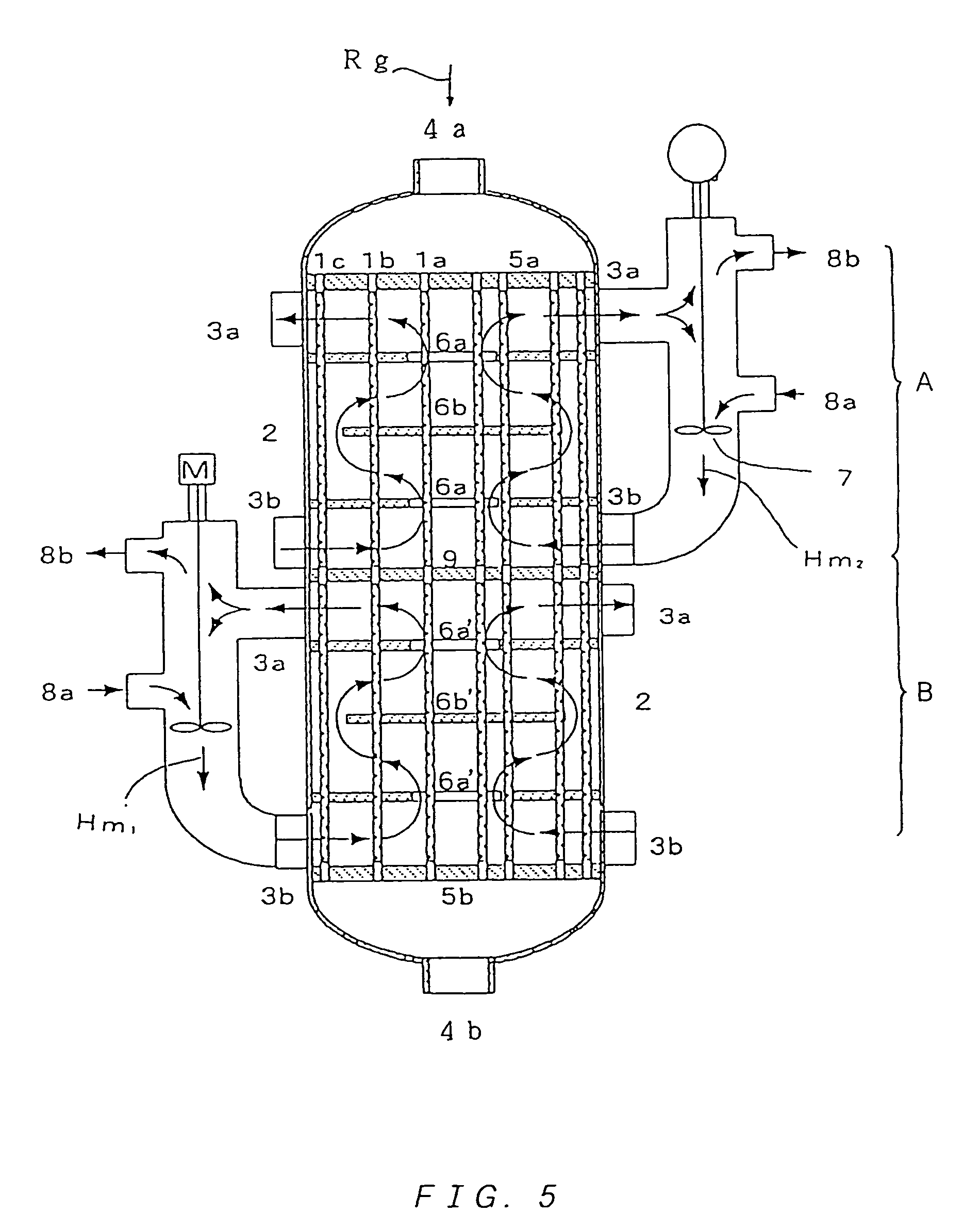Multitube reactor, vapor phase catalytic oxidation method using the multitube reactor, and start up method applied to the multitube reactor
a multi-tube reactor and vapor phase technology, applied in the direction of metal/metal-oxide/metal-hydroxide catalysts, physical/chemical process catalysts, lighting and heating apparatus, etc., can solve the problem of scattering, reduced yield of target products, irregular amount of catalyst inside reaction tubes, etc., to reduce catalyst life, reduce yield, affect catalyst activity and selectivity
- Summary
- Abstract
- Description
- Claims
- Application Information
AI Technical Summary
Benefits of technology
Problems solved by technology
Method used
Image
Examples
example 1
[0271]For an oxidation reaction of propylene, catalyst powder having a composition (atomic ratio) of Mo(12)Bi(5)Ni(3)Co(2)Fe(0.4)Na(0.2)B(0.4)K(0.1)Si(24)O( x) was produced (oxygen composition x is a value determined from oxidation states of the respective metals) as a former stage catalyst.
[0272]The catalyst powder was molded in to ring-shaped catalysts having an outer diameter of 5 mmΦ, an inner diameter of 2 mmΦ and a height of 4 mm.
[0273]Two stainless steel tubes both having a length of 3,500 mm, and respectively having an outside diameter of 30.57 mmΦ, a wall-thickness of 1.80 mm, and an outside diameter of 30.23 mm, a wall-thickness of 2.10 mm were used as reaction tubes (nominal outside diameter of 30.40 mmΦ and nominal wall-thickness of 1.80 mm). Note that, an outside diameter tolerance and a wall-thickness tolerance of the tubes are ±0.l / mm (±0.56%) and −0.30 mm, −0 mm (+16.7%, −0%), respectively.
[0274]Further, a reactor used had a shell inner diameter of 100 mmΦ.
[0275]A ni...
example 2
[0281]Two stainless steel tubes both having a length of 3,500 mm, and respectively having an outside diameter of 30.58 mmΦ, a wall-thickness of 1.80 mm, and an outside diameter of 30.22 mmΦ, a wall-thickness of 2.14 mm were used as the reaction tubes (nominal outside diameter of 30.40 mmΦ and nominal wall-thickness of 1.80 mm). Note that, the outside diameter tolerance and the wall-thickness tolerance of the tubes are ±0.18 mm (±0.59%) and +0.34 mm, −0 mm (+18.9%, −0%), respectively.
[0282]The reaction was conducted in the same manner as in Example 1 except for the reaction tubes.
[0283]The reaction was conducted for 1 week at a heat medium Hm temperature of 330° C. The propylene conversion and the yield were 97.2% and 90.0%, respectively, and the highest temperature of the reaction catalyst layers was 394° C.
[0284]The reaction was continued for 1 month maintaining the heat medium Hm temperature at 330° C. The propylene conversion and the yield were 96.8% and 89.7%, respectively, and ...
example 3
[0285]Two stainless steel tubes both having a length of 3,500 mm, and respectively having an outside diameter of 30.65 mmΦ, a wall-thickness of 1.80 mm, and an outside diameter of 30.15 mmΦ, a wall-thickness of 2.16 mm were used as the reaction tubes (nominal outside diameter of 30.40 mmΦ and nominal wall-thickness of 1.80 mm). Note that, the outside diameter tolerance and the wall-thickness tolerance of the tubes are ±0.25 mm (+0.82%) and +0.36 mm, −0 mm (+20%, −0%), respectively.
[0286]The reaction was conducted in the same manner as in Example 1 except for the reaction tubes.
[0287]The reaction was conducted for 1 week at a heat medium Hm temperature of 330° C. The propylene conversion and the yield were 97.4% and 89.9%, respectively, and the highest temperature of the reaction catalyst layers was 429° C.
[0288]The reaction was continued for 1 month maintaining the heat medium Hm temperature at 330° C. The propylene conversion and the yield were 94.0% and 88.0%, respectively, and th...
PUM
 Login to View More
Login to View More Abstract
Description
Claims
Application Information
 Login to View More
Login to View More - R&D
- Intellectual Property
- Life Sciences
- Materials
- Tech Scout
- Unparalleled Data Quality
- Higher Quality Content
- 60% Fewer Hallucinations
Browse by: Latest US Patents, China's latest patents, Technical Efficacy Thesaurus, Application Domain, Technology Topic, Popular Technical Reports.
© 2025 PatSnap. All rights reserved.Legal|Privacy policy|Modern Slavery Act Transparency Statement|Sitemap|About US| Contact US: help@patsnap.com



